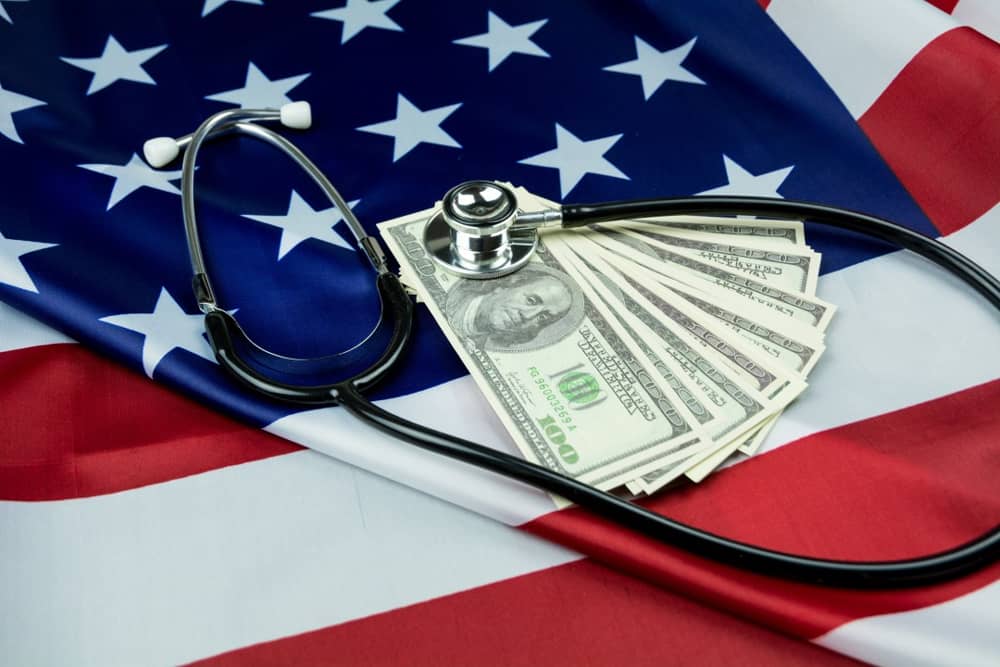US Healthcare System
The United States, with a population of over 330 million, has one of the most complex healthcare systems in the world. This system is made up of an intricate web of relationships between healthcare providers, payers, and patients. The US healthcare system is constantly evolving.

The History of the US Healthcare System
The intricate healthcare system of the United States is deeply rooted in a rich and tumultuous past. From its charitable origins in the colonial era to the evolution of government programs and the emergence of the private healthcare industry, this system has undergone remarkable transformations over the centuries.
Colonial Era and Early Republic:
During the colonial era, healthcare was primarily provided by families, neighbors, and charitable organizations. Physicians often practiced privately, and their services were inaccessible to many. Hospitals were mainly for the poor and indigent.
19th Century:
The 19th century witnessed the rise of private hospitals and medical schools. Scientific and medical advancements led to improved healthcare, but disparities in access and quality persisted. The first health insurance programs emerged to cover the costs of illness and disability.
20th Century:
The 20th century brought about major transformations in the US healthcare system. The establishment of government programs like Social Security and Medicare in the 1930s and 1960s expanded access to healthcare for the elderly and disabled. The growth of the private healthcare industry led to a wider range of providers and insurance options. Technological advancements resulted in the development of life-saving drugs and treatments.
Late 20th Century and Today:
In the late 20th century and today, the US healthcare system has faced numerous challenges, including rising costs, uninsurance, unequal quality, and inefficiencies. Various reforms have been proposed to address these challenges, but no definitive solution has been found. The debate over the future of the US healthcare system continues.
Suggested Article: Holidays and National Celebrations in the United States
The US Healthcare System
Unlike many developed nations, the United States does not have a universal healthcare system. The US government does not directly provide healthcare services to citizens or visitors. Whenever you receive medical care, someone must pay for it.
Healthcare services in the US are very expensive. According to a US government website, a broken leg could result in a bill of $7,500. If you require a three-day hospital stay, the cost would be approximately $30,000.
Most people in the US have health insurance coverage. Health insurance protects you from the financial burden of paying directly for doctors or hospitals if you become sick or injured. To obtain health insurance, you must pay regular premiums to a health insurance company. In return, the insurance company agrees to pay some or all of your medical bills.
Funding Sources for Hospitals
Hospitals, both public and private, receive funding from a combination of public and private sources. Hospitals are typically funded through a system called diagnosis-related groups (DRGs). A DRG assigns a fixed payment amount for a specific illness or treatment episode. Hospital stays are widely used as a payment scheme for hospitals by the Centers for Medicare & Medicaid Services (CMS) and many private payers.
Medicare Payments
Unlike the fee-for-service method of billing for surgeries and medications, Medicare pays hospitals a fixed amount based on the DRG, regardless of the actual cost of treatment. DRG-based payments cover hospital stay expenses (such as room and board, facility fees, etc.), surgery costs, support personnel (nurses, technicians, etc.), and drug/medical device costs. However, this system does not include physician fees.
Suggested Article: Public Transportation in the United States

Private Health Insurance Plans in the US
In the United States, a wide range of private health insurance plans are available, including national, regional, and self-insured (offered by large companies) plans. Employers in the country typically contribute to or fully pay the monthly premiums for their employees’ private health insurance (group insurance) to maintain their coverage.
Some individuals also purchase private health insurance for themselves through the health
insurance marketplace or “exchange” (non-group insurance). Non-group policyholders may be eligible for tax credits based on their household income.
Insurance companies pay healthcare providers (hospitals and physicians) for services rendered based on prior agreements. These payments, especially for health insurance plans with low deductibles, constitute a significant portion of the total cost of care.

Government Health Insurance Programs in the US
Government health insurance programs (such as Medicare, Medicaid, and the Children’s Health Insurance Program [CHIP]) are administered by the Centers for Medicare & Medicaid Services (CMS) and are primarily funded through federal taxes.
Medicare: Medicare is the largest single payer in the United States, providing health insurance coverage for individuals aged 65 and older, as well as younger individuals with permanent disabilities or advanced kidney disease, regardless of income or medical history.
Medicaid: Medicaid provides healthcare services to individuals below the poverty line and those who cannot afford health insurance coverage, based on eligibility criteria. Funding for this program is shared between the federal government and individual states. Each state sets its own guidelines for eligibility, services, and reimbursement. Some individuals may qualify for coverage under both Medicare and Medicaid, known as “dual coverage.”
Children’s Health Insurance Program (CHIP): CHIP is a national health insurance program for children under the age of 18 who are not eligible for other insurance coverage, including private insurance.
Primary Care Physician (PCP)
You will receive a significant portion of your healthcare services from a primary care physician (PCP). Once you have purchased health insurance, you can select a PCP from your insurance company’s network of physicians. Students at the Massachusetts Institute of Technology (MIT) who are enrolled in the institute’s health insurance plan can choose their physician from among the MIT Health physicians. Your PCP can be a nurse practitioner or a physician. You will visit your PCP for physical exams, blood tests, illnesses, and ongoing care for conditions such as diabetes or high blood pressure.
Scheduling Appointments
To receive healthcare services, you typically need to schedule an appointment. To schedule a visit with your PCP, you must call their office and make an appointment. When you call, you will need to explain the reason for your visit. If you are sick or injured, you will likely be scheduled for an appointment soon. However, for routine physical exams, you may need to wait a few weeks or even a month.
Summary
The healthcare system in the United States presents a complex paradox. On one hand, it boasts world-class medical advancements and facilities. On the other hand, it lacks universal coverage, resulting in high costs and potential financial burdens for its citizens. This unique system creates a situation where cutting-edge treatments may be available, but access for many individuals becomes a significant barrier.
Resolving this contradiction requires innovative solutions that bridge the gap between medical marvels and widespread affordability. This could involve a combination of approaches such as cost-control measures, expanding public insurance options, or even a hybrid model that leverages the strengths of both private and government-run systems. Ultimately, the success of the U.S. healthcare system hinges on its ability to ensure the opportunity for everyone to receive the care they need, regardless of their financial status.
For more information on studying in the US and immigrating to the US, contact the Pen Students Institute.





